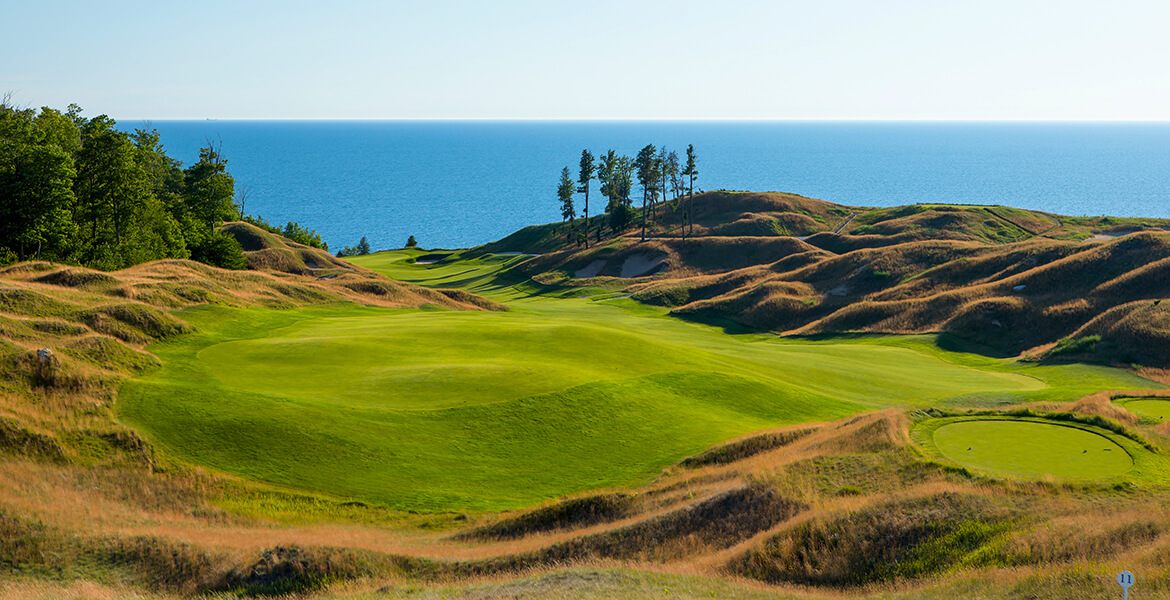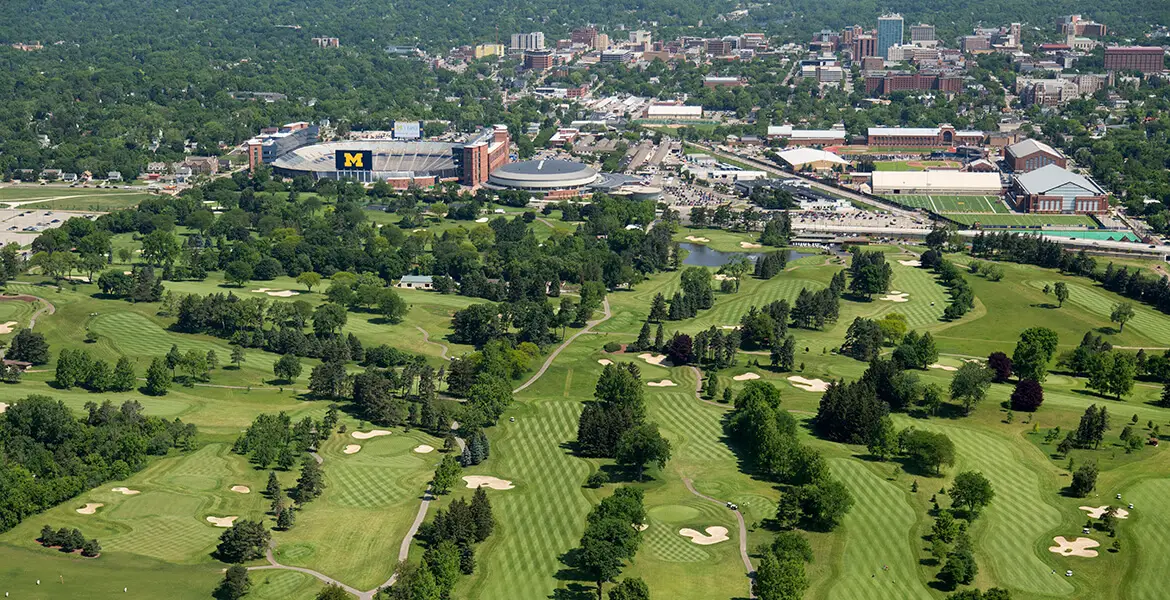Back when a college job meant flipping burgers, I stumbled onto an offer I couldn’t rightly refuse: manning the pro shop at Radrick Farms, the University of Michigan’s faculty/staff golf course. A close audit might reveal the disappearance of a number of beers and a few ham sandwiches during my tenure, yet miraculously the operation has managed to survive and prosper for 50 years.
When Radrick took root in 1965, few people were familiar with its young architect, an Indianapolis-based life insurance salesman by the name of Pete Dye, who theretofore had designed but 27 holes. Then-U of M president Harlan Hatcher had a chance to play Dye’s nine-hole El Dorado and was suitably impressed, hiring him to transform a former gravel pit into the university’s second golf course (a daunting task, given that the “student” course was the handiwork of one Alister MacKenzie).

Today, many agree that Radrick is among Michigan’s finest and most playable designs. Yet it would take a keen golf eye to tell that it is a Dye course: But for a few railroad ties behind the 5th green, the course reads like a traditional parkland design. The 6,967-yard layout is still a fairly stern test, though it has been a bit compromised by modern-era sticks and balls, especially on the shortish par fives, the lengthiest of which is still only 530 yards.
Pete and his co-conspirator/wife Alice Dye returned in the late 1980s and drew up a list of recommended improvements. The 2nd green had proven to be a little too penal even for Pete, and has been reshaped to hold a few more approach shots. The aforementioned railroad ties were added then as well, after the Dyes saw them used at Prestwick to keep eroding sand intact.
Most members walk the course, traversing gentle hills on the front side, then are offered respite on the back where three flat wetlands holes make for a watery slog home. Little dirt was moved in its construction, and precious little development has disturbed the natural setting, which is home to plenty of foursomes and four-legged critters alike. Radrick has earned Audubon Society “Sanctuary” certification, and is the first golf course deemed a “Clean Corporate Citizen” by the state’s Department of Environmental Quality.

To my Midwestern eye, Radrick Farms is what a golf course ought to look like: all trees and turf, with no adjacent housing; sight-lines that delineate proper strategy from the teeing ground (but for a few blind looks for balance); and a four-hour journey that unfolds like a good story, slowly and steadily, with a few surprising plot twists in the third act. And like the venerable Dyes themselves, Radrick is only getting better as the years go by. Happy 50th!





